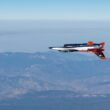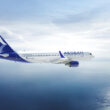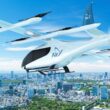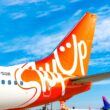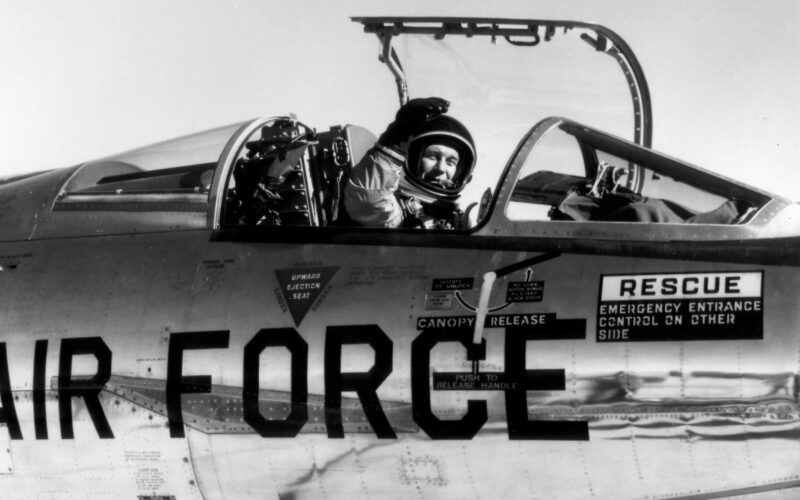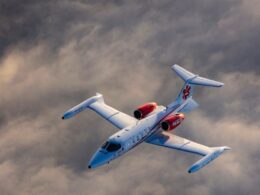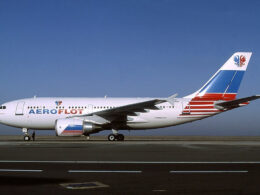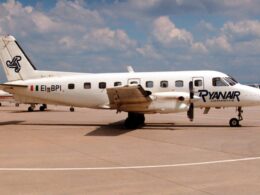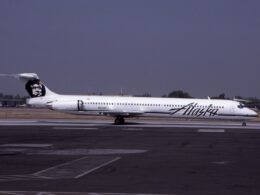As the aviation industry is preparing to celebrate International Pilots’ Day, let’s take a look back at some outstanding pilots whose heroism has changed history.
Geraldine “Jerrie” Mock
In 1932, Amelia Earhart flew solo from Newfoundland to Paris aboard a Lockheed Vega, becoming the first woman, and the second pilot after Charles Lindberg, to cross the Atlantic alone. However, she had an even greater ambition, as she projected to become the first woman to fly around the world. Sadly, shortly after embarking on her journey in 1937, she disappeared mysteriously.
Yet Earhart’s efforts did not go in vain. Inspired by her exploits, Geraldine Lois Fredritz, nicknamed “Jerrie”, set out to become the first woman to fly around the globe solo. On March 19, 1964, after logging only 750 flight hours, she took off from Columbus, Ohio, in a Cessna 180 named “Spirit of Columbus” (after Charles Lindbergh’s Spirit of Saint Louis). Jerrie was in a race against time that opposed her to Joan Merriam Smith, another female pilot who had decided to follow Earhart’s trail and took off two days before.
Mock arrived in Columbus on April 17, 2021, after a journey of 29 days, 11 hours, and 59 minutes, thus becoming the first woman to fly around the globe solo. Smith arrived in California a month later.
Chuck Yeager
After distinguishing himself as an ace fighter pilot during the Second World War, Chuck Yeager became a test pilot. In 1947, he volunteered for the Supersonic Airplane Project at Rogers Dry Lake, California.
On October 14, 1947, Yeager sat in the cockpit of the experimental rocket-powered Bell XS1 (named “Glamorous Glennis” after his wife), attached under a specially modified Boeing B-29 Superfortress heavy bomber. After reaching an altitude of 45,000 feet (13 kilometers), the XS1 was released by the bomber.
A few minutes later, a loud bang was heard by witnesses: Chuck Yeager had just become the first human to break the sound barrier. The Bell X-1 machmeter showed a speed of Mach 1.06 (1,130 kilometers per hour), earning Chuck the name of the “fastest man alive”.
The crew of United Flight 232
On July 19, 1989, a United Airlines McDonnell Douglas DC-10, registered as N1819U, took off from Stapleton Airport (DEN) in Denver, Colorado to carry out flight 232 to Philadelphia (PHL), Pennsylvania. The aircraft had 296 people on board, out of which 285 were passengers and 11 crew members. The flight crew was composed of captain Alfred Clair Haynes, first officer William Records, and flight engineer Dudley Dvorak.
An hour and seven minutes into the flight, the flight crew heard a thud, which sounded like an explosion. The pilots realized that the central engine aft of the aircraft had suffered an uncontained engine failure, resulting in the loss of the hydraulic systems.
Without control of anything other than the power of the two lateral engines, the flight crew attempted to steer the plane the best they could and made an emergency landing at the Sioux City airport in Iowa. Dennis Fitch, a passenger that happened to be an United Airlines captain and DC-10 flight instructor, offered his help with controlling the engine thrust.
The aircraft touched down on the runway threshold, with the tip of the right wing impacting the ground first, followed by the landing gear. The plane bounced several times, breaking off the cockpit and the tail section. The main fuselage rolled on its back before coming to a stop and bursting into flames. One crew member and 111 of the 285 passengers were killed.
Following the crash investigation, the US National Transportation Safety Board (NTSB) concluded that faced with an unprecedented situation, “the UAL flight crew performance was highly commendable and greatly exceeded reasonable expectations.”
Chesley “Sully” Sullenberger
On January 15, 2009, the US Airways Airbus A320-200, registered as N106US, took off from New York La Guardia (LGA) to carry out flight US-1549 to Charlotte Douglas International Airport (CLT), in North Carolina.
Two minutes into the flight, the airplane hit a flock of birds, sucking in two geese per engine and causing both of them to lose power. At a mere 3,200 feet (1km) altitude, the odds were against the captain, Chesley “Sully” Sullenberger, to turn back and land in the airport of departure, the option given by La Guardia departure controller. “Unable, we may end up in Hudson,” Sully answered, a premonitory sentence that has since become famous.
After considering landing at the small Teterboro Airport (TEB) in New Jersey, the crew eventually decided to land on the Hudson River. To the very last seconds before landing, the pilots still tried to re-ignite the engines, to no avail.
And so, on a cold January day, Sully landed the flight US-1549 on the icy Hudson River – an achievement to this day nicknamed “the miracle on Hudson”.
It took only twenty minutes after the impact for the 150 passengers and 5 crew members to evacuate the aircraft and be picked up by what were mostly tourist boats cruising on the river.
The NTSB praised “the decision-making of the flight crew members and their crew resource management during the accident sequence,” along with the cabin crew behavior during the evacuation.
He Chao
On October 11, 2016, the pilots of China Eastern Airlines A320, registered as B-2337, were cleared to take off to carry out flight MU5643 from Shanghai Hongqiao to Tianjin. The flight crew started its takeoff run when the captain, He Chao, noticed that an A330 was about to cross the runway.
Indeed, moments before, China Eastern Airlines (CIAH) (CEA) flight MU5106 had been authorized by air traffic controllers to cross the runway. When the flight MU5643 almost reached takeoff speed, He Chao decided to proceed and pushed the takeoff/go-around switch. The crew of the second plane also noticed the aircraft taking off and accelerated taxiing to get off the runway as soon as possible.
The A320 climbed over the A330, separated by just 19 meters (62 feet.) The two flights proceeded normally and the 413 passengers and 26 crew were safe.
The final investigation found that the air traffic controllers were at fault and their licenses were suspended. China’s Civil Aviation Authority praised the reactivity and “decisiveness” of He Chao who avoided a Tenerife-style disaster and saved 439 lives.

